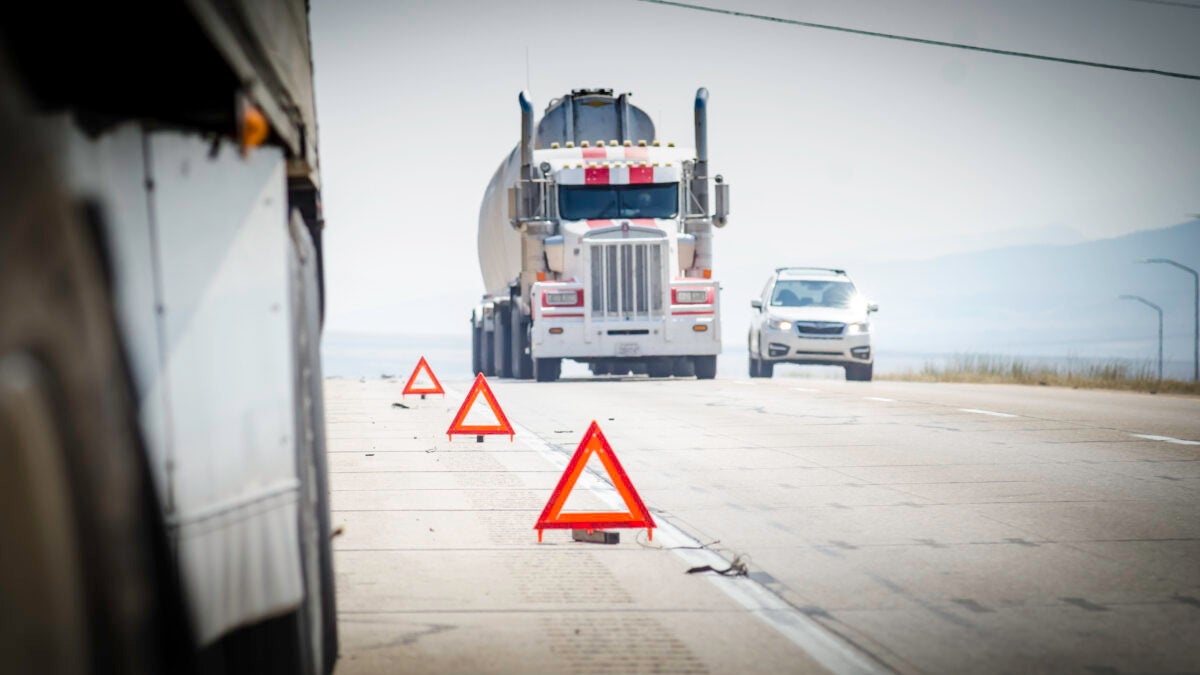The autonomous truck battle: Roadside cab-mounted beacons versus triangles

The question of roadside warning devices adds a triangle-shaped wrinkle to autonomous truck makers’ plans after the Federal Motor Carrier Safety Administration recently ruled that Aurora and Waymo did not provide enough data backing their request to ditch the traditional triangular road devices for cab-mounted warning beacons. Aurora and Waymo filed the petition in 2023 seeking a five-year exemption from the required placement of warning devices around stopped commercial motor vehicles (CMVs). Level 4 automated driving systems (ADS) have a unique issue if a roadside event occurs – namely that there would not be a person available to leave the vehicle and place warning devices, which can come in the form of fusees, liquid-burning flares or three bidirectional reflective triangles.
For the FMCSA, one of the reasons behind the denial is that the cab-mounted warning beacons are only at the front of the truck, while the flares, fusees or reflective triangles are behind the trailer. In layman’s terms, the concern is that it’s harder to see.
FMCSA Deputy Administrator Vinn White said in the denial notice: “One distinction between … warning triangles and the proposed beacons is that warning triangles are placed at the rear of a stopped CMV (in addition to the front), while the proposed beacons are located only at the front of the cab — raising the possibility that drivers see the rear of a stopped CMV before they see the beacons. While applicants contend that the beacons are visible from behind the vehicle, the evidence was inconclusive.”
The same notice stated that Waymo commissioned a study to evaluate whether drivers could detect, recognize and respond to certain beacons on a closed test track in daylight and nighttime conditions while simulating a stopped CMV. The study compared driver reactions to cab-mounted warning beacons with reactions to warning triangles and found that the participants preferred the beacons over the triangles.
Aurora also did a study observing the reactions of over 7,000 passenger vehicles to the presence of beacons versus warning triangles on public roads with unaware passing motorists traveling at highway speeds. The study found that similar proportions of motorists responded to the presence of beacons and warning triangles at similar distances and r



Comments are closed, but trackbacks and pingbacks are open.